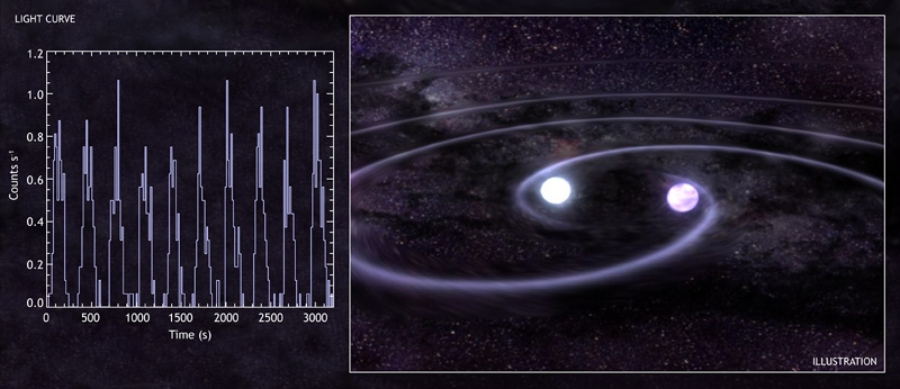
 Credit: Light curve: NASA/CXC/GSFC/T. Strohmayer; Illustration: GSFC/D. Berry
Credit: Light curve: NASA/CXC/GSFC/T. Strohmayer; Illustration: GSFC/D. Berry
Dancing Dwarfs
Stars often form in pairs. And the smaller they are, the closer they can be.
The Chandra X-ray Observatory has recently shown that an X-ray source called
RX J0806.3+1527, is apparently a double star system. A peculiar aspect of this system
is that it shows periodic X-ray variations (as shown in the left side of the figure above) and optical variations, too, with a
period of only 5 minutes Most likely this represents orbital motion, and if it
does it means that the star and its companion must be separated by only 50,000
miles, and the orbital speeds are enormous - more than one million miles an hour. Another peculiar property is that the system must radiate gravity waves - and in fact the system would be the brightest source of gravitational radiation yet identified. The illustration above right shows the binary system causing gravity waves, "ripples in spacetime". The loss of energy from the system by gravity waves means that the stars should eventually merge - an produce an extremely bright supernova.
Last Week *
HEA Dictionary * Archive
* Search HEAPOW
* Education
Each week the HEASARC
brings you new, exciting and beautiful images from X-ray and Gamma ray
astronomy. Check back each week and be sure to check out the HEAPOW archive!
Page Author: Dr. Michael F. Corcoran
Last modified Monday, 26-Feb-2024 17:21:55 EST


